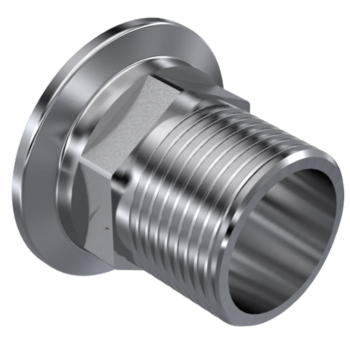Orifice Flange Suppliers
ASME B16.36 Flanges Manufacturers
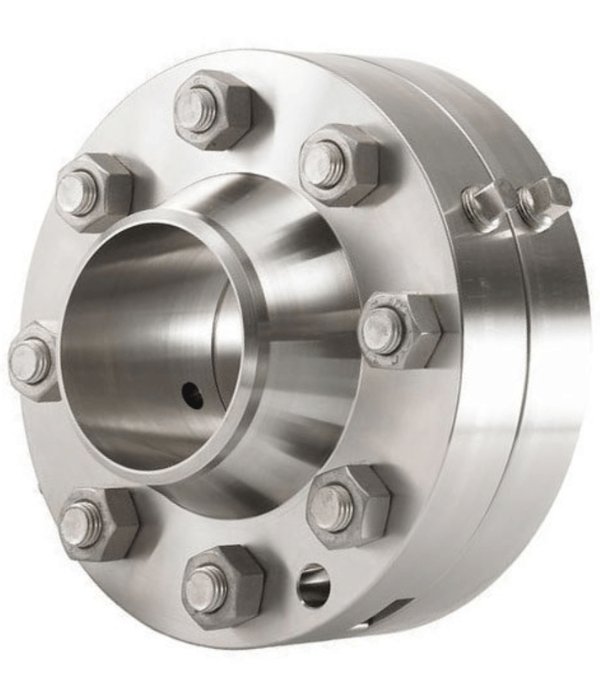
ASME B16.36 Orifice Flanges: Dimensions | Specifications | Material Grade | Standards | About Orifice Flange | All Product Types
Orifice flanges are specialized components used in conjunction with orifice plates to measure the flow rate of liquids, gases, or steam in a pipeline. These flanges are designed with radial pressure tap-holes on both sides, enabling accurate differential pressure measurements. Typically supplied in pairs with jack screws, these flanges ensure easy installation and removal of the orifice plate during maintenance or calibration. The design supports critical applications where precise fluid flow monitoring is essential.
Engineered as per ASME B16.36, orifice flanges are available in raised face (RF), ring-type joint (RTJ), and sometimes flat face (FF) facing types depending on the pressure rating and sealing requirements. These flanges are commonly offered in pressure classes ranging from Class 300 to Class 2500, and in sizes from 1/2″ NB to 24″ NB, ensuring compatibility with high-pressure process systems. Orifice flanges are frequently made from stainless steel, carbon steel, duplex steel, super duplex (UNS S32750 / S32760), and high-nickel alloys for superior corrosion and temperature resistance.
Unlike standard flanges, orifice flanges come equipped with tapping points, nuts, bolts, jacking screws, and gaskets tailored for flow measurement systems. They are used alongside flow transmitters or differential pressure gauges in a wide range of industries, including oil & gas, petrochemical, chemical, thermal power, water treatment, and offshore applications. The orifice plate itself can be concentric, eccentric, or segmental, depending on the flow media and application need.
At Nutech Overseas, we supply fully tested and certified orifice flanges in compliance with international standards like ASME B16.5, B16.36, ISO, DIN, and EN 1092-1, with options for customized tapping arrangements and special coatings. We offer orifice flanges with weld neck ends, RTJ grooves, and NACE MR0175 compliance for sour service conditions. Each unit undergoes 100% dimensional inspection, PMI, hydro test, and is supplied with EN 10204 3.1 / 3.2 certificates, ensuring unmatched quality and performance for global clients.
ASME B16.36 Orifice Flanges | Flow Measurement Flanges with Jack Screws, Tapping Holes & Plate Carriers
For complete technical details, including dimensions, pressure rating classes, weight charts, sizes, tolerances, and material specifications of our ANSI B16.5 Orifice Flanges, please download the full Catalog PDF below.
Precision Orifice Flanges for Flow Metering in Refineries, Oil & Gas, Chemical Plants – RF & RTJ Face – Class 300 to 2500, Sizes ½″ to 24″
Technical Specifications of Orifice Flanges
| Specification | Details |
|---|---|
| Type | Orifice Flange with Tapping Holes, Jack Screws & Plate Carrier – Raised Face (RF), Ring Type Joint (RTJ) |
| Design Standard | ASME B16.36, ASME B16.5, ANSI B16.5, API 6A |
| Size Range | ½″ NB to 24″ NB (DN15 to DN600) |
| Pressure Ratings | Class 300, 600, 900, 1500, 2500 (PN50 to PN420 as per EN equivalents) |
| Face Type | Raised Face (RF), Ring Type Joint (RTJ) |
| Bore & Tapping | Precision machined orifice bore, with radial tapping holes for differential pressure measurement |
| Plate Compatibility | Designed for use with concentric, eccentric, or segmental orifice plates |
| Jack Screw Design | Includes jack screws for easy removal of orifice plate during maintenance |
| Flange Thickness | As per ASME B16.5 / B16.36 based on pressure class and flange size |
| Gasket Compatibility | Spiral wound gaskets, RTJ ring gaskets – suitable for high-pressure sealing |
| Testing & Inspection | Hydrostatic test, PMI, Visual Inspection, NDT (Ultrasonic / Magnetic Particle on request) |
| Dimensional Tolerances | As per ASME B16.36, ASME B16.5 or client-approved drawings/specs |
| Certification | EN 10204 Type 3.1 / 3.2, IBR Approval, ISO 9001, PED 2014/68/EU, NACE MR0175 / ISO 15156, ISO 9001 |
| Application Industries | Oil & Gas, Petrochemical Plants, Power Generation, Flow Control Systems, Refineries, Water Treatment, Food & Beverage, Fire Protection Systems, Pulp & Paper, Shipbuilding, HVAC, Offshore Installations |
| Origin | Made in India (by Nutech Overseas) |
| Export Network | USA, Europe, and Middle East |
Complete Material Grade Chart - Class 150 Orifice Flange
| Material Category | Orifice Flange Grades |
|---|---|
| Stainless Steel Orifice Flange | ASTM A182 F304 / F304L / F304H, F316 / F316L / F316Ti, F310, F309S, F317 / F317L, F321 / F321H, F347 / F347H, F904L, ASTM A351 CF3 / CF3M / CF8 / CF8M / CF8C, DIN 1.4301, 1.4306, 1.4307, 1.4311, 1.4401, 1.4404, 1.4408, 1.4409, 1.4541, 1.4571, 1.4550, 1.4435, 1.4539 |
| Duplex Steel Orifice Flange | ASTM A182 F51 / F52 / F53 / F54 / F55 / F57 / F59 / F60 / F61, UNS S31803 / S32205 |
| Super Duplex Steel Orifice Flange | ASTM A182 F53 / F55 / F57 / F59 / F60 / F61, UNS S32750 / S32760 |
| Carbon Steel Orifice Flange | ASTM A105 / A105N, ASTM A350 LF2, ASTM A694 F52 / F56 / F60 / F65 / F70 / F80, ASTM A216 WCB, DIN 1.0460 / 1.0402 / 1.0619, Die Steel, Mild Steel |
| Alloy Steel Orifice Flange | ASTM A182 F5 / F9 / F11 / F12 / F22 / F91, AISI 4130 / 4140 |
| Nickel Alloy Orifice Flange | Nickel 200 / 201, ASTM B564 |
| Monel Orifice Flange | Monel 400 (UNS N04400), Monel K500 (UNS N05500), ASTM B564 |
| Inconel Orifice Flange | Inconel 600 / 601 / 625 / 690 / 718 / 783 / X750, ASTM B564 |
| Incoloy Orifice Flange | Incoloy 800 / 800H / 800HT (UNS N08800), Incoloy 825 (UNS N08825), Incoloy 925, ASTM B564 |
| Hastelloy Orifice Flange | Hastelloy C276 (UNS N10276), C22 (UNS N06022), C4, C2000, B2, B3, X, ASTM B564 |
| Alloy 20 Orifice Flange | Alloy 20 / 20Cb-3, Carpenter® 20, ASTM B462 |
| 254 SMO Orifice Flange | SMO 254 / 6Mo, UNS S31254, DIN 1.4547, ASTM A182 |
| Copper Nickel Orifice Flange | Copper Nickel 90/10 (C70600), 70/30 (C71500), UNS C71640, ASTM B61 / B62 / B151 / B152 |
| Copper Orifice Flange | TP1, TP2, T1, T2, C10100–C12300, C14200–C17200, C21000–C71520, including C10930, C11000, C11400, C12000, C12200, C26000, C28000, C33000, C44300, C70600, etc. |
| Brass Orifice Flange | Grades 3602, 2604, H59, H62, etc. |
| Aluminium Orifice Flange | Aluminium Grades 5052, 6061, 6063, 2017, 7075, etc. |
| Titanium Orifice Flange | ASTM B381 Gr.1 / Gr.2 / Gr.4 / Gr.5 / Gr.7, UNS R50250 / R50400 / R50550 / R50700 / R52400 / R53400 / R56320 / R56400 |
| Other Special Grades | Al6XN, Tin Bronze, Aluminium Bronze, Lead Bronze, Nimonic 75 / 80A / 90 |
International Flange Standards We Manufacture & Supply
An Orifice Flange is distinct from standard flange types like weld neck or slip-on flanges because it is specifically engineered for flow measurement and instrumentation purposes. The key differentiating features are:
- Integrated Pressure Taps:
Orifice flanges have precisely drilled pressure tap holes on both sides of the flange. These taps are used to connect differential pressure instruments such as transmitters, gauges, or manometers, allowing accurate measurement of flow across an orifice plate.
- Orifice Plate Accommodation:
A machined groove or space between the mating flanges holds an orifice plate—a thin metal disc with a central bore. The fluid passing through the bore creates a pressure drop used to calculate flow rate using Bernoulli's Principle.
- Jack Screws (Jacking Bolts):
To simplify maintenance, orifice flanges are supplied with jack screws that help separate the flanges for easy removal and inspection of the orifice plate—without damaging the sealing surfaces.
- Conformance to ASME B16.36:
Unlike regular pipe flanges governed by ASME B16.5 or B16.47, Orifice Flanges follow ASME B16.36, which defines their dimensional requirements, pressure tap placement, and facing types.
- Common Facing Types:
Available in Raised Face (RF) and Ring Type Joint (RTJ) configurations, they are used where accurate and repeatable flow measurement is critical—often in fiscal metering systems, custody transfer stations, and process control loops.
This design ensures precision, repeatability, and compatibility with most differential pressure-based flow measurement devices, making orifice flanges a vital component in process-critical industries.
Orifice flanges are a crucial part of fluid control systems across various industries that require accurate, reliable, and cost-effective flow measurement. Their precision, ease of integration with instruments, and compliance with international standards make them a preferred choice in:
- Oil & Gas and Petrochemical:
Used extensively in upstream, midstream, and downstream segments, orifice flanges help measure crude oil, natural gas, and refined product flows. They are ideal for custody transfer stations, where precise metering is critical for financial accounting.
- Power Plants:
In thermal and hydro power plants, orifice flanges are used to measure steam, feedwater, and cooling fluid flow to optimize system efficiency and ensure safe operation.
- Water Treatment & Desalination:
Municipal and industrial water treatment facilities use orifice flanges to monitor chemical dosing, wastewater discharge, and clean water distribution, ensuring proper regulation and environmental compliance.
- Chemical & Fertilizer Plants:
Their robust material compatibility (Stainless Steel, Alloy Steel, Duplex, Monel, Inconel, etc.) makes them suitable for corrosive media and harsh environments, ensuring accurate process control and safety.
- Marine & Offshore Applications:
Orifice flanges are used to monitor fuel and ballast water systems on ships and offshore platforms, where space-saving and rugged designs are essential.
Their standardized design as per ASME B16.36 and compatibility with a wide range of differential pressure instruments makes them an industry-standard flow metering solution across these demanding sectors.
Yes, orifice flanges can be customized depending on the type of fluid (liquid, gas, or steam), flow characteristics, pressure conditions, and specific industry standards.
Customization Options Include:
- Orifice Plate Type: Concentric (for clean fluids), Eccentric (for slurry or gas with condensate), or Segmental (for dirty or viscous fluids).
- Tap Configuration: Flange taps, corner taps, or D-D/vena contracta taps — based on accuracy and system design.
- Material Compatibility: Stainless steel for corrosion resistance, alloy steel for high pressure/temperature, or duplex/super duplex for offshore and aggressive fluids.
- Compliance Needs: Plates and flanges can be manufactured as per ISA, AGA, API, or ISO standards, depending on end-user or country requirements.
Industry Examples:
- In refineries, orifice flanges may be customized to withstand high temperatures and hydrocarbon media.
- In water treatment, the focus is often on corrosion resistance and low pressure drop.
- For steam lines, plates are designed to resist erosion and ensure stable flow readings.
Orifice flanges are engineered to ensure accurate flow rate calculations by incorporating precise pressure tap holes and standardized orifice plates. Their popularity stems from their cost-effectiveness and ease of integration in high-pressure pipelines.
| Measurement Method | Accuracy | Installation Complexity | Cost | Power Required | Common Use Case |
|---|---|---|---|---|---|
| Orifice Flanges | High (if installed correctly) | Moderate | Low | No | Oil & Gas, Refineries, Power Plants |
| Venturi Meters | Very High | High | High | No | Water Treatment, Steam Lines |
| Ultrasonic Meters | High | Moderate | High | Yes | Water & Wastewater, Custody Transfer |
| V-Cone Meters | High | Moderate | High | No | Complex Fluids, Compact Installations |
Orifice flanges remain a top choice due to their simplicity, compliance with global standards, and reliable differential pressure readings.
Orifice flanges are governed by several international standards that ensure their dimensional accuracy, pressure-handling capability, and compatibility with orifice plates and flow meters.
Key standards include:
- ASME B16.36 – Specifically defines dimensions and requirements for orifice flanges.
- ASME B16.5 / B16.47 – Governs general flange dimensions and pressure ratings.
- API 598 / API 6A – Used for pressure testing and inspection procedures.
- MSS-SP-44 – Often applicable to large-diameter flanges.
- EN 1092-1 – European standard for steel flanges, sometimes used for global exports.
- NACE MR0175 / ISO 15156 – Required for sour service applications (H₂S environments).
At Nutech Overseas, each orifice flange undergoes PMI testing, dimensional checks, and NDT (as required) to ensure compliance with applicable standards and client specifications.
Did You Know?
The pressure tapping location and the flange face type (RF/RTJ) must also conform to flow measurement design codes such as AGA/API/ISO for precise integration.
Orifice flanges are available in several variations, each designed for specific flow measurement setups and process requirements. The main types include:
Weld Neck Orifice Flanges
- Feature a long tapered hub.
- Ideal for high-pressure and high-temperature applications.
- Commonly used with precise flow meters in critical systems.
Slip-On Orifice Flanges
- Easier to install and align.
- Suitable for low to moderate pressure applications.
- Cost-effective for less critical flow measurement systems.
Threaded Orifice Flanges
- Used in low-pressure, non-welded systems.
- Common in small diameter pipelines with threading compatibility.
RTJ Orifice Flanges
- Feature a Ring Type Joint groove.
- Designed for high-pressure sealing using metal ring gaskets.
- Ideal for offshore and petrochemical applications.
Raised Face (RF) Orifice Flanges
- Most common type for general-purpose applications.
- Supports both gasketed sealing and orifice plate alignment.
Each type of orifice flange includes precisely machined orifice plate housing, pressure tap holes, and often comes with jack screws for easy flange separation during maintenance.
Orifice flanges are widely exported to key global markets, especially in regions known for oil & gas and flow measurement systems. These include:
- United States – Frequently shipped to industries across Texas, Louisiana, and California for pipeline metering and pressure monitoring systems.
- Europe – Supplied to Germany, Italy, Spain, and the Netherlands for applications in chemical plants, power generation, and industrial flow regulation setups.
- Middle East – Exported in large volumes to the UAE, Saudi Arabia, Oman, and Qatar, where they're used in refineries, petrochemical plants, and offshore platforms.
These flanges are manufactured as per ASME B16.36, with strict dimensional accuracy, pressure class compatibility, and customized bore holes for precise orifice plate fitting. Global clients prefer them for their accurate flow control, reliable sealing, and compatibility with differential pressure transmitters.
Browse The Products
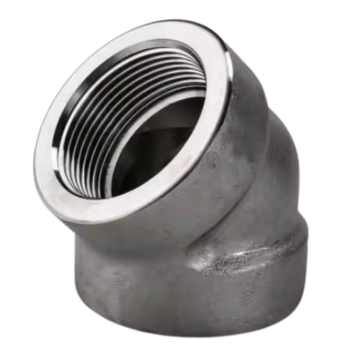
Forged Fittings
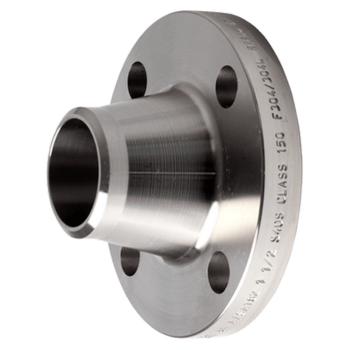
Flanges
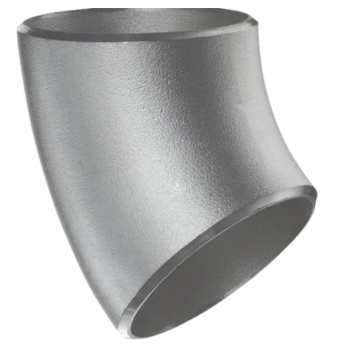
Buttweld Fittings
